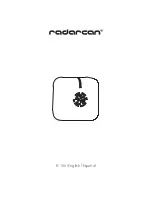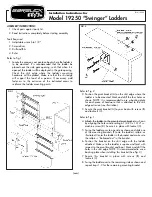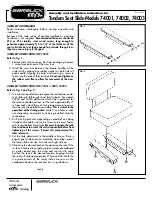
1
Operating Precautions
The MARS 6 must be grounded. In the event of an electrical short circuit, grounding reduces the risk of electric shock by
providing an escape wire for electric current. This instrument is equipped with a cord having a grounding wire with a
grounding plug. The plug must be plugged into an outlet that is properly installed and grounded. Consult a qualified
electrician or service technician if the grounding instructions are not completely understood or if doubt exists as to whether
the instrument is properly grounded. If it is necessary to use an extension cord, use only a 3-wire extension cord that has
a 3-blade grounding plug and a 3-slot receptacle that will accept the plug from the instrument. The marked rating of the
extension cord must be equal to or greater than the electrical rating of the instrument.
The possibility of instrument-induced electromagnetic interference (EMI) is minimal if the instrument is operated as
outlined in this manual. The instrument should not be placed close to any electrical device susceptible to EMI. It is
suggested by the manufacturer that the user post a sign warning pacemaker wearers that a microwave device is in
operation. If the instrument is suspected of inducing EMI, a microwave leakage measurement should be performed as
outlined in this manual. Leakage measured above the legal limit of 5 mW/cm
2
should be reported to the CEM Service
Department.
Cardiac pacemakers require magnets to control their operation during checkout. If the instrument is equipped with an
optional magnetic sample stirrer which contains very high static magnetic fields, some danger exists if a pacemaker is
positioned in close proximity of the instrument cavity (such as placing the head into the instrument cavity to perform a
visual inspection). If the instrument is suspected of interfering with the operation of a pacemaker, the instrument should be
turned off or the pacemaker wearer should move away from the instrument.
This instrument utilizes high voltages and microwave radiation. Instrument service and repair should be performed only by
those trained in repair and maintenance of high voltage and microwave power systems.
Warnings, cautions and notes are included throughout this manual and should be read thoroughly and strictly follows.
WARNING
:
A warning is inserted for essential information used to emphasize dangerous or hazardous conditions to the
operation, cleaning and maintenance of the instrument which may result in personal injury.
CAUTION
:
A caution is inserted for essential information used to emphasize procedures which, if not strictly followed,
may result in damage or destruction to the instrument or improper instrument operation.
NOTE
: A note is inserted for emphasis of procedures or conditions which may otherwise be misinterpreted or overlooked
and to clarify possible confusing situations.
WARNING
If the MARS 6 is used in a manner not specified by CEM Corporation in this manual, the protection
provided by the instrument may be impaired.
This instrument complies with United States Code of Federal Regulations 21CFR Part 1030.10 (C) for microwave
leakage. A verification report is on file. This instrument complies with FCC Requirements in the United States Code of
Federal Regulations (47CFR Part 18) - Industrial, Scientific and Medical (ISM) Equipment - emissions requirements. A
verification report is on file.
The name “Teflon” is used throughout this manual. Teflon® is a registered trademark of the E.I. DuPont Company.
This product has been tested to the requirements of CAN/CSA-C22.2 No. 61010-1, second edition, including Amendment
1, or a later version of the same standard incorporating the same level of testing requirements.
Содержание MARS 6
Страница 1: ...Operation Manual Microwave Reaction System...
Страница 5: ...iv Ordering Information 92 Specifications 93 Warranty 95...
Страница 13: ...8...
Страница 39: ...34 4 Scroll the Method Information screen to view the remainder of the method information as illustrated below...
Страница 47: ...42 Power Time Graph Temperature Time Graph Temperature in Vessel Graph...







































